Dave Cochran Changed History
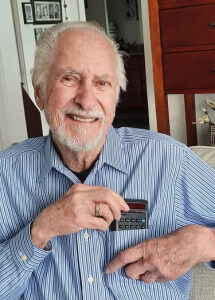 What I find incredible about RVM is the number of people who have had fascinating careers. Dave Cochran is one of them. David Packard introduced him to a navy admiral as the man who invented the HP-35- the pocket calculator that changed the world. One year after its invention in 1972, slide-rules were a thing of the past. While numerous people worked on it, Dave was HP’s Project Chief for the HP-35. Basically, he was responsible for how it looked and how it worked. For his part in the development of architecture and algorithms of the HP-35, he was included in the bicentennial issue of Time Magazine’s “American Ingenuity”. One of the major components of the HP-35 was its use of Reverse Polish notation (RPN). Instead of putting in 8×2=16, you would you hit 8, Enter, 2, X (you still get 16). Dave said that the reason he used this was due to the greater exactness of the equations under study and less chance of ambiguity. People either loved it or hated it, but it was mostly techies who loved it, so ultimately mass marketing demand led HP back to ordinary algebraic formulations.
What I find incredible about RVM is the number of people who have had fascinating careers. Dave Cochran is one of them. David Packard introduced him to a navy admiral as the man who invented the HP-35- the pocket calculator that changed the world. One year after its invention in 1972, slide-rules were a thing of the past. While numerous people worked on it, Dave was HP’s Project Chief for the HP-35. Basically, he was responsible for how it looked and how it worked. For his part in the development of architecture and algorithms of the HP-35, he was included in the bicentennial issue of Time Magazine’s “American Ingenuity”. One of the major components of the HP-35 was its use of Reverse Polish notation (RPN). Instead of putting in 8×2=16, you would you hit 8, Enter, 2, X (you still get 16). Dave said that the reason he used this was due to the greater exactness of the equations under study and less chance of ambiguity. People either loved it or hated it, but it was mostly techies who loved it, so ultimately mass marketing demand led HP back to ordinary algebraic formulations.
In some sense, America’s electronic future was serendipitously linked to the fact that the Navy’s electronic school was on Treasure Island, just a short distance away from Palo Alto where he grew up. His original interest was in mechanics and he planned to study mechanical engineering at Stanford before the Korean War took him to other shores for five years. But since the Navy offered him a nine-month training in electronics on Treasure Island, that is what he studied. And after the war was over, he went into electrical engineering when he was able to return to Stanford. While studying, he managed a part -time job at Hewlett-Packard and of course this relationship melded into a full-time career when he received his degree.
How one’s mind works is certainly the fascinating part of the creative process. Dave believes that creativity is developed and learned by trial and error. If your circuit works the first time, you don’t learn anything. He thinks graphically, imagining shapes in his mind. He was part of a Princeton study looking at his thinking ability. They wanted to know if he needed to visualize things along the way, which he does. He invents by having a goal and then stretching the idea to reach the goal.
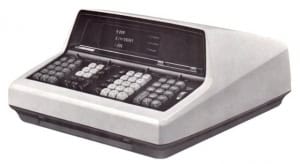 Of course, there would be no HP-35 without Bill Hewlett. He wanted a calculator that would fit inside his desk.
Of course, there would be no HP-35 without Bill Hewlett. He wanted a calculator that would fit inside his desk.
Before that, calculators were much, much larger. Dave, leading the team, developed the HP 9100. Unfortunately, it was just a little big for Hewlett’s desk, so quietly, they restructured his desk so that it would fit. The 9100 was the first mass-produced computer in the history of the world. Before that, no one had ever built fifty at once.
As soon as that was done, Hewlett pushed for a pocket calculator. One that would do everything that the 9100 would do, but would fit perfectly in his pocket. The team dreamed of designing Bill new shirts with bigger pockets, but that didn’t last long. And so the HP-35 was on its way. Hewlett started to bug Dave personally and would come into the lab and look at him and ask him how it was coming.
Dave said that the HP-35 ruined parties. Before, if there were a piano player at a party, everybody would cluster around and either listen or sing. After the HP-35 got off the ground, groups of men would be huddled together and women would be on the other side wondering what was going on. I thought this was rather a sexist comment and so I asked him again about men and women during the seventies. But he reiterated that at that time, there were almost no women engineers. And even today male engineers outnumber females ten to one.
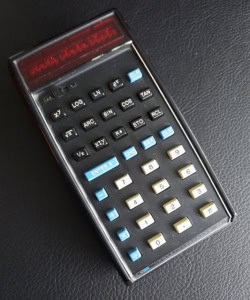
Dave said that he saw how the HP-35 changed the world first hand. He would go down to universities out of state for college recruiting and would give a little talk about the HP-35 design. Afterwards, the professors would tell him how difficult it made their lives. “What do I do? Do I let them use a calculator (instead of a slide rule)? They all can’t afford it ($395). Do I have to buy them for everybody?”
During the development stage, they had a “name the baby” contest with many entries such as Math Marvel, Athena, etc. But Hewlett came by and said it should be call the HP-35 because it had 35 keys. And that was that.
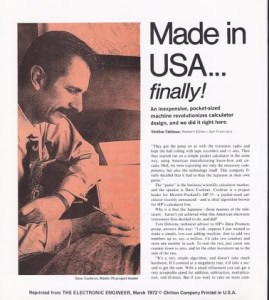
This is actually a picture of Dave
The HP-35 was the number-one selling HP product of all time. Looking back, it was Dave’s most important project. But 70% of his projects at HP were successful, meaning that they went into production and were profitable for the company. If he couldn’t embrace it, he either killed the project or got off of it.
A friend of mine said ,” I had an HP-35 and it was a great calculator. The keys had “positive click action” and I loved that. You also had to enter your equations using Reverse Polish Notation which was odd at first but easy to learn. I was the last student in my high school physics class to use a slide rule because the others all had calculators and I couldn’t afford one. Then I won the HP in a contest and that was the end of the slide rule.”
Of course, Dave had an HP-35 for me to hold. He kept talking about the keys and how they felt, and they did feel wonderful. They would click easily and comfortably so that you knew your number was going in. What he loved the most was the admiration and appreciation of the engineers who knew what it took to develop the product. He loved fixing problems and unlike today pretty much wherever you work, HP of that time was very collaborative so it was a pleasure to work there. Thank you Dave for the HP-35. I remember the slide rule. I am glad that it is gone!!!!!
Addendum: People have asked about the others at HP who worked on the HP-35 so here they are: Tom Osborne, Paul Stoft, Paul Williams, Chu Yen, Ken Peterson, Rich Marconi, Charlie Hill, Bill Misson , Dick Osgood, Clarence Studley, Bernie Musch, Jim Duley, Margaret Marsen, John Welsch, Ed Liljenwall, Tom Holden, Neil Honeychurch, Thomas Whitney, Chung C. Tung and France Rodé.

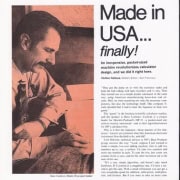


David is an inventor but also a wonderful human being. Fun to talk to, good sports. It has been an honor to have had Dave in my house, talking to my family and teaching us about all types of subjects. We love you Dave!!!
Dave was a pioneer in the technology that we take for granted today. Great article and homage to Dave and his HP-35.
Thanks Dave. I’ve used my Hp-12c since 1976 and about a year ago I bought the Hp-35S for its engineering functions. I also used my Hp-48x programmable calculator when I was working at a civil engineering office. What I always liked about Reverse Polish Notation was that if somebody picked up your calculator to use it for a minute, you got it back right away… they didn’t know how to make it work if it didn’t have an “equals” button. Thanks Dave. You guys turned out great products.
I’m so happy to know more about Dave. His eyes sparkle when we talk about his career and the time he met Joni. Good article!
Dave is incredibly intelligent but even more so, he is humble. In the many conversations I have had with him, Dave eluded to his “contributions” to the HP-35 project. He kind of skipped the part where he was the Project Chief! Simply an amazing person.
We at RVM are honored to have TWO men that worked on the HP-35.
The second one is Paul Williams.
It was an amazing machine.
Correction:
It STILL IS and amazing machine.
This Comment was from Doyne Mraz, and was transferred from its original site to accompany the other comments on the Dave Cochrane article
I lived in Los Altos, CA, before we moved to Oregon. One day in 1970, my front door bell rang, and it was Barney Oliver, the Vice-President for Research at Hewlett-Packard. How I came to know Barney is not the intent of my message. He did hold in his hand an object which seemed very strange to me. He found a wall plug in my living room and plugged in this strange machine. Then he said, “Give me some outrageous numbers to add, subtract, multiply and divide.” Barney was not a person to scoff at; he was always serious in his endeavors. So I gave him some numbers; he touched keys in the machine, and surely the results were significant, but not clear to my non-engineering mind. Barney said, ” This object will change the world.” Of course, he was serious; I passed it off, thinking Barney had been drinking in the middle of the day. I offered coffee. We talked. Indeed, it was the first attempt at a calculator made by Hewlett-Packard, and it was earth shattering. That machine now lives in the Hewlett-Packard museum, unless the Smithsonian has escaped with it. My story surrounds Dave Cochran, whom Barney Oliver taught algorithms and who worked with Barney on the Bart system in the Bay Area. It’s a very small world, and one never knows if another person knows someone close to you. I loved Dave’s story.
My goodness! Am I ever impressed?! Congratulations on your amazing achievements.
it is a great feeling to read about Mr. David Cochran, a wonderful person, I had the opportunity to be with the family, during my college years.